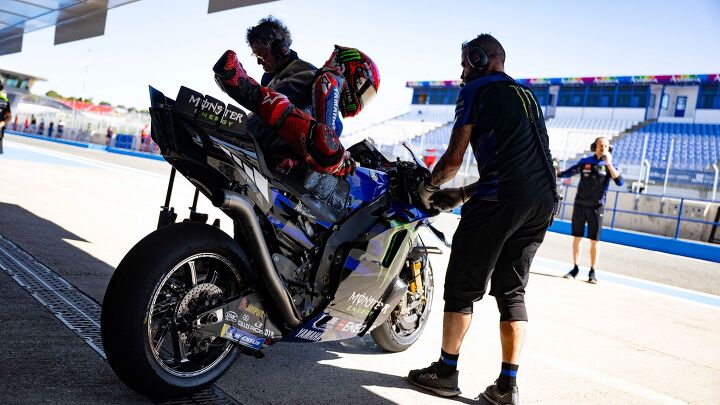A New Era of MotoGP Begins in 2027

Featuring smaller displacement, aero restrictions and sustainable fuels
The Federation Internationale de Motocyclisme’s (FIM) Grand Prix Commision has ratified new technical regulations that will introduce a new era of MotoGP in the 2027 season. The new rules will bring about the most significant technical changes since 2012.
The most significant change will see MotoGP class engines capped at a displacement of 850cc, down from the 1,000cc capacity introduced in 2012. Cylinder bores will be reduced from the current 81mm to 75mm, and engines will remain exclusively four-cylinder four-strokes. According to MotoGP, the smaller displacement will mean lower top speeds, which will improve safety, and improved mileage, which means more efficiency and sustainability.
To encourage development of more durable engines, the new rules will also reduce the number of engines allotted to each rider, from the current 7 to 6 over a 20-round season. Should a season have 21 or 22 races, the limit will be increased to 7.
The number of gearbox ratios will also be capped at 16, plus 4 different primary drive ratios per season.
Because the new engines will be a full reset for all manufacturers, the concession system will also reset with all returning manufacturers slotted into Rank B at the start of the 2027 season. Any new manufacturers entering the series that season will begin in Rank D. Concession rankings will be adjusted at the midway point of the 2027 season, based on the results of that season alone. The regular ranking system will resume at the end of the 2027 season.
With the goal of improving efficiency, fuel tank capacities will be reduced from 22 to 20 liters (5.8 to 5.3 gallons) for a full Grand Prix race, and from 12 to 11 liters (3.2 to 2.9 gallons) for a Sprint race. The fuel itself will also be different, with the series mandating 100% sustainable fuels from the current 40%. These sustainable fuels are expected to consist of a combination of synthetic or bio-fuels.
The 2027 season will also see new restrictions on aerodynamics. The maximum width of front fairings will be reduced from the current 600mm to 550mm (23.6 inches to 21.7 inches), and the nose of the front fairing will be moved back by 50mm (2.0 inches). This change is expected to reduce the effectiveness of aerodynamics on the straights and in braking zones. Aerodynamic surfaces on the rear must be homologated for the start of the season, with manufacturers allowed to make one update during the campaign.
The new regulations will also ban any ride height adjustment devices including “holeshot” devices aimed at improving starts. Minimum weights will be set at 153 kg (337 pounds) from the current 157 kg (346 pounds) for the current 1,000cc machines.
GPS data from all riders will also be made available to all other teams at the end of each session, a move that will benefit the lower ranked teams by giving them access to more data.
How you view these changes depends on your view on MotoGP racing itself. Those who see it as the pinnacle of motorcycling and the breeding ground for performance will likely see this as a step backward. Conversely, those who want MotoGP to better reflect production motorcycles or a shift in emphasis from technology to individual rider skill will probably see these changes as beneficial.
It remains to be seen how well each manufacturer will adapt to the changes, and also whether the new rules will attract more manufacturers, such as BMW, or those who have left the series such as Kawasaki and Suzuki.
Become a Motorcycle.com insider. Get the latest motorcycle news first by subscribing to our newsletter here.

Dennis has been a part of the Motorcycle.com team since 2008, and through his tenure, has developed a firm grasp of industry trends, and a solid sense of what's to come. A bloodhound when it comes to tracking information on new motorcycles, if there's a new model on the horizon, you'll probably hear about it from him first.
More by Dennis Chung































Comments
Join the conversation
Here we go again. When displacement was lowered before, corner speeds went up, but the racing was just less interesting. The racing right now is as good as I have ever seen it. Close races, many different riders on the podium or winning, and lots of innovation. MotoGP is currently the only prototype class in road racing. Why would you mess with that?
Didn't we already do this and went back to the liter bikes? What do you call someone who does the same thing over and over again and expects different results?